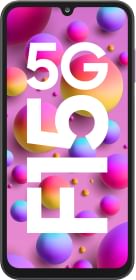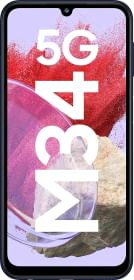Imagine being able to get the precise location and directions to your keys or TWS earbuds when they lie concealed underneath your sofa cushion? Or the option to get directions to specific stores within a mall? Or the option to securely unlock your car or office door as you approach them. That’s what the Ultra-wideband or UWB technology on phones can help accomplish.
Samsung Galaxy Note 20 Ultra was the first Android phone to include true variable refresh rate display and UWB technology that can potentially change how we interact with smart IoT devices. Since then, the technology has made it to other Samsung flagships in the Fold and S series.
Apple’s iPhone 11 already has it and since OEMs like Samsung, Sony, Xiaomi, and more are already associated with Fira consortium that’s working on the development and widespread adoption of UWB, more flagships are likely to include Ultra-wideband connectivity in 2021.
Apple has also quietly added U1 Ultra wide-band Locator chip to the Apple Watch Series-6, which should make them easily discoverable and users will perhaps be able to unlock doors without even pulling their phones out of their pockets.
Page Jumps:
- What is Ultra-wideband Technology?
- How does Ultra-wideband Technology work?
- What are Ultra-wideband technology use cases?
- How does Samsung Galaxy Note20 Ultra use UWB connectivity?
- Phones with Ultra-wideband (UWB) connectivity
Also Read: What is LTPO Display?
What is Ultra-Wideband technology?
Ultra-wideband technology is about getting extremely precise location data in a very short time and doing so in a secure manner. GPS can lead you to your home, but what if you need directions to an object lying within your home? That’s how precise Ultra-wideband connectivity can be while consuming less power than Bluetooth and Wi-Fi!
How does Ultra-Wideband technology work?
The technology has been around for more than a century, but it’s now finding popular use cases with IoT devices. UWB in our phones is actually IR UWB or Impulse radio Ultra-wideband. It involves pushing wide 500MHz(or greater) radio wave pulses at very high frequency (intervals around 2 nanoseconds) and then measuring the time of flight (round trip time for the signal to travel between two UWB devices).
Also Read: What is Nearby Share? How does it work?

UWB can determine distance accurately to within a few centimeters and it also uses angle-of-arrival (AoA) technology to indicate the precise direction of the signal. If your car supports UWB unlocking, it will be able to seamlessly unlock the exact one door that you are approaching.
What are Ultra-wideband technology use cases?
Such precise location tracking obviously opens a wealth of use cases. Apart from indoor navigating and finding lost objects, UWB can make IoT devices recognize your presence. Your audio system would recognize which room you are in or light bulbs could glow automatically as you enter a room.
UWB can also be used for hands-free payments when you approach a ticket counter, or for smart cars of the future to verify your credentials.

Fima consortium classifies potential use cases under three segments:
Seamless Access Control – These include UWB-based solutions that track your approach, verifies your security credentials, and then let you pass through.

Location-Based Services – These include applications resulting from highly precise positioning, even in crowded environments.

Device-to-Device (Peer-to-Peer) Services – These involve use cases where two UWB devices communicate with each other (AIrdrop, Nearby share) or track each other. “People with mobile phones could locate each other with precision, parents won’t lose track of their children, and rideshare customers would find their driver in a sea of vehicles.”
On the downside, UWB connectivity will also expose users to targeted advertising and precise location tracking could compromise user privacy. This is why Apple added an option to disable its U1 UWB chip altogether.
How Samsung phones use UWB connectivity?
Right now Apple iPhones, Samsung Galaxy S21 Ultra, Samsung Galaxy Note 20 Ultra, and other compatible Samsung phones use UWB to enhance file sharing via Airdrop and Nearby-share, respectively.
Samsung has worked closely with Google to get UWB on Note 20 Ultra integrated with Nearby share protocol. Another UWB device will show encircled in a blue ring in the Nearby Share menu on Note 20 Ultra.
Samsung has revealed its plans to develop UWB connectivity on Galaxy Note 20 Ultra for Smart Things Find, which will use AR interface and help locate smart objects indoors, and also as a Digital key that will help you unlock doors, cars, etc.
Phones with Ultra-wideband (UWB) connectivity support
Only two phones have UWB support as of today, but Xiaomi and other android OEMs are expected to come aboard soon.
- Samsung Galaxy Note20 Ultra
- Samsung Galaxy S21 Ultra and Galaxy S21+
- iPhone 11-series and Apple Watch Series 6
- iPhone 12-series
- Samsung Galaxy Z Fold 2
- Google Pixel 6 (upcoming)




































Supposedly Verizon sold a phone starting in June of 2020 called the S20 5G UW that did used Ultra wideband. But I have not been able to verify that. SM-G981V